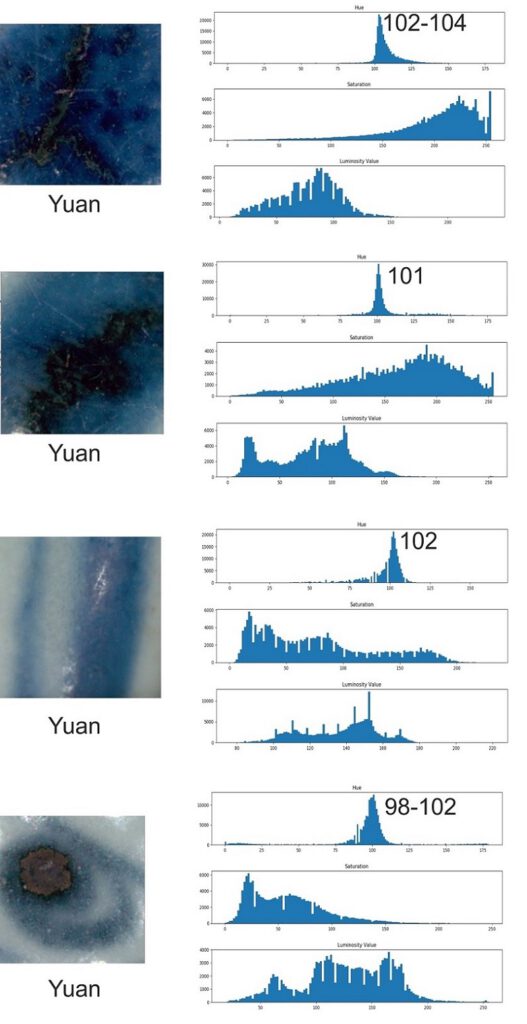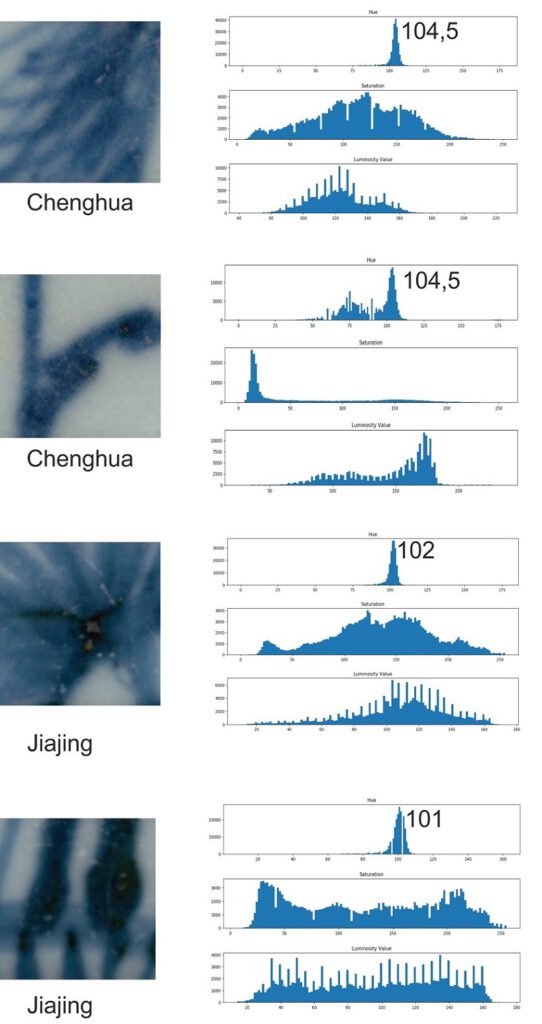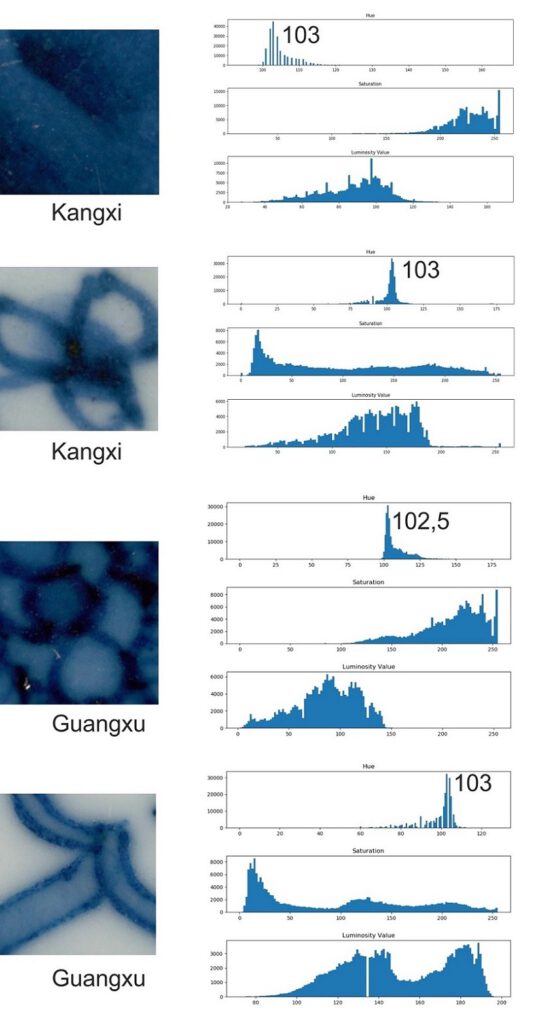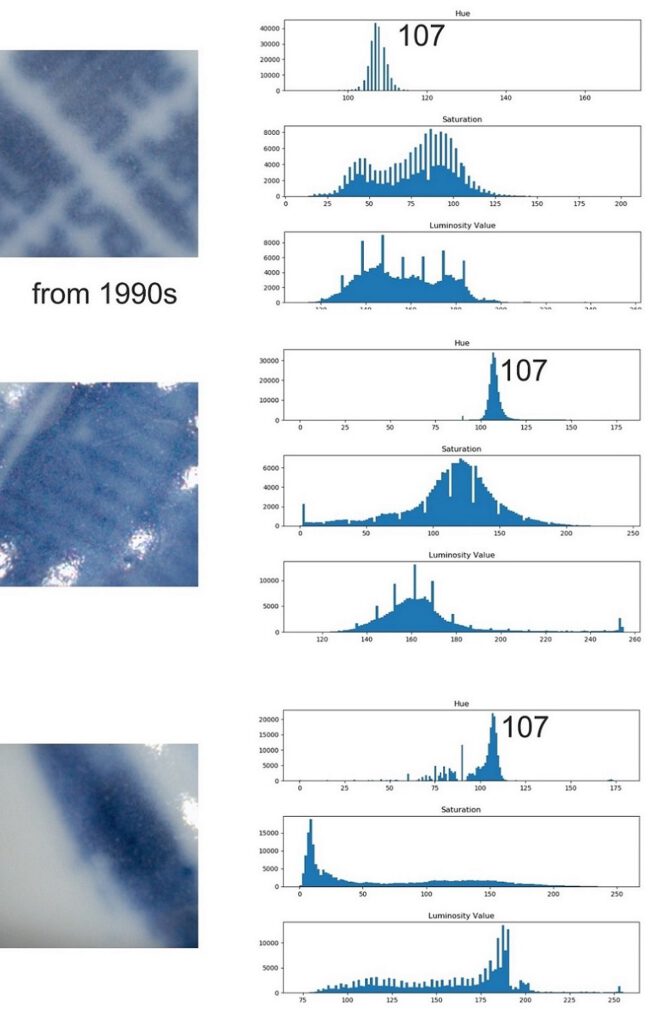Cobalt blue has been started to use on ceramic in China since Tang dynasty (618-907 AD). But it was not widely used till Yuan dynasty. Since 14th century on, it has been used in the massive industrial production in Jingdezhen, China.
During different eras, different cobalt ores from different original places were exploited. In Yuan time, the cobalt was imported from Persia (now Iran). In Ming dynasty, the cobalt came from Jiangxi, Zhejiang, and possibly still Persia (‘Huiqing’ was called during Jiajing reign). The hue of cobalt could be the main feature to tell the production time.
Nowadays we could read lots of books or document about how to distinguish the blue and white porcelain ware. However, according to the description, it is difficult for beginner to understand. Here we use HSV color system to see the difference of the cobalt hue. From the Hue value we gotten, we could see that the hue of cobalt blue is more to indigo than blue.


During Yuan period, cobalt ore was rich in iron oxide and low manganese (Mn2+). We got the hue from most of the Yuan samples we analyzed on the peak 102.

During Chenghua reign, the imported cobalt was facing used-up. The domestic cobalt was employed. Here the peak of hue value on 104,5 was different from others. We need more samples to analyze. For Jiajing reign, as ‘Huiqing’ was used and those wares from this reign had dark blue. Here we can see with the peak of hue value on 101 and 102, which were quite similar with the samples from Yuan period.

The hue of cobalt from Kangxi and Guangxu reign is quite unique with peak on 103.

The hue value of cobalt blue on peak 107 from modern industry is shifting to purple. This is possibly related to the modern cobalt which contains higher manganese.
References (further reading):
Kerr R., Wood N. Science and civilization in China, Vol. 5 – Chemistry and chemical technology, Part 12 – Ceramic technology, Ed. Joseph Needham. Cambridge University Press, 2004.
Pope J.A. Fourteenth-century blue-and-white: a group of Chinese porcelains in the Topkapu Sarayi Müzesi, Istanbul. 2nd Ed. Freer Gallery of Art occasional papers, Washington D.C., 1970
Pope J.A. Chinese porcelains from the Ardebil Shrine. Sotheby Parke Bernet Publications, London and New Jersey, 2nd Edition, 1981.
Wood N. Chinese Glazes. A & C Black, London, University of Pennsylvania Press, Philadelphia, 1999.